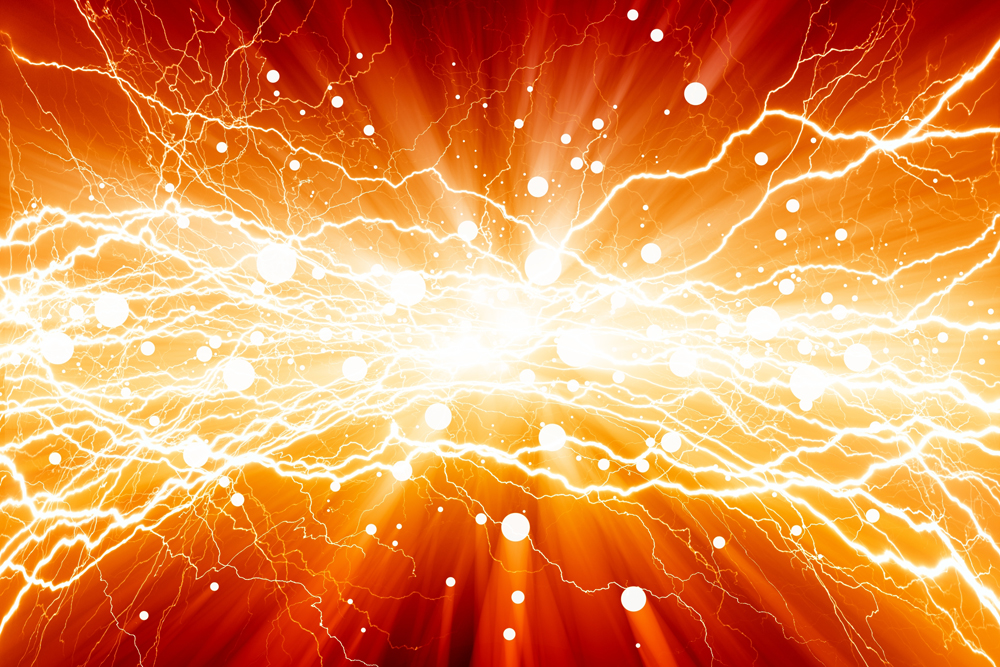
Scientists have spotted electricity flowing like a fluid inside a weird group of metals, and it's left them baffled.
The experiment, conducted in nano-sized wires made from a weird class of material called "strange metals," shows electricity no longer moving in clumps of electrons — contradicting one of physicists' most basic assumptions about how metals behave.
If the observations are correct, they could not only shed light on strange metals, which have confounded physicists since the metals' discovery nearly 40 years ago, but lead to a reevaluation of how electrical charge can be carried. The researchers published their findings Nov. 23 in the journal Science.
Related: Bizarre particle that can remember its own past created inside quantum computer
"Strange metals" are a type of quantum material with some truly weird properties: Not only do they flout the rules of electrical resistance seen in regular metals, but some can even become superconductors at relatively high temperatures — meaning they can carry an electrical current without any resistance.
In regular metals, electrical resistivity — the measure of how difficult it is for an electrical current to flow through a material — increases with the square of the temperature, before flattening out when the metal gets very hot. This makes intuitive sense — resistivity arises when charge-carrying electrons in a metal collide and scatter within the metal's vibrating atomic structure, so increasing the vibrations of the atoms will increase this scattering rate up to the point where the electrons become unable to carry a current.
But in 1986, a class of copper-containing materials called cuprates broke all the rules. The resistance of cuprates instead increased linearly with temperature, and when some of them were cooled below a certain temperature threshold — minus 211 degrees Fahrenheit, or minus 135 degrees Celsius — they transformed into superconductors.
Something deeply strange was going on with the way the metals carried a current.
Until the discovery of strange metals, physicists viewed traditional metals as made up of a Fermi "sea" of largely individual electrons that carry a current one by one. This was later developed to include interactions between the electrons by physicist Lev Landau, who theorized in 1956 that electrons in metals clumped together according to the spooky rules of quantum entanglement.
This means that when metals' electrons swim in the form of a current, they don't move discretely but rather flow in clumps of quasiparticles. Landau's theory proved stunningly accurate, becoming the standard view of how metals conduct electricity.
Yet the weird linear rise of resistance in strange metals remained unexplained. To test what could be going on, the researchers behind the new study fashioned minuscule nanowires (each 200 nanometers wide and 600 nanometers long, roughly five times smaller than a bacterium) from a precise blend of the strange metals ytterbium, rhodium and silicon, before cooling them to temperatures just a few degrees above absolute zero.
Then, after passing brief bursts of current through the wires, the scientists measured fluctuations in the flow of electrons, using a classic phenomenon known as shot noise. As quantum particles, electrons are governed by random quantum mechanical processes. Apply a voltage across a wire, then, and the electrons inside will zip from one end to another at random times.
Usually, so many electrons take part in this process that the randomness of when each one moves is drowned out by the stampede of the overall current. But by making wires small and voltages tiny, physicists can reduce the number of electrons able to flow and make the static crackle of the current visible.
"Discrete charges have some statistical fluctuations in how they flow," senior author Douglas Natelson, a professor of physics at Rice University in Texas, told Live Science. "Like sand grains through an hourglass, on average there is a smooth flow, but if you look carefully, sometimes two successive grains come through close together in time, and other times farther apart."
If Landau's theory of clumped quasiparticles applies to strange metals, the shot noise detected in the experiment should show its electrons arriving in discrete clumps.
But shockingly, rather than large splatters, the current in the nanowires arrived as a continuous hiss — electricity was being carried through the wires, but it appeared to be out of step with the charge carriers meant to transport it.
"Think about a crowded hallway. In the ordinary metal case, even though the hallway is crowded, a particular person (the quasiparticle) can get through the hallway with just a slight disturbance of neighboring folks as they go by," Natelson explained. "In the strange metal case, the hallway is more like a mosh pit. Everyone is jostling around so much that you can't really follow an individual anymore, but somehow there is still a net flow of a person down the hall."
Now that the weird phenomenon has been observed, the researchers said that, by looking for it in other strange metals, they may find a common "organizing principle" behind the weird material phase, as well as some crucial hints as to how strange metals achieve superconductivity.







